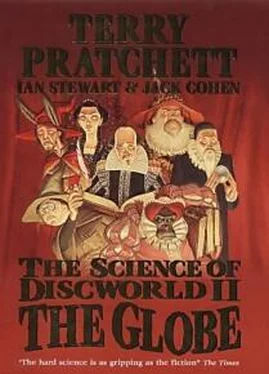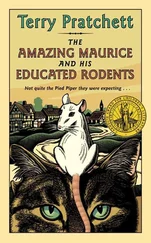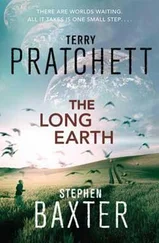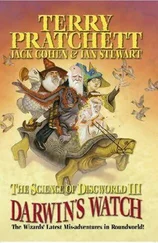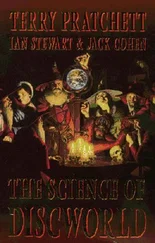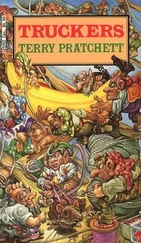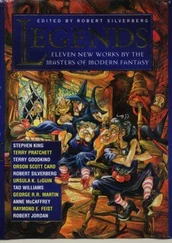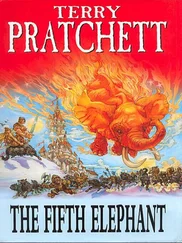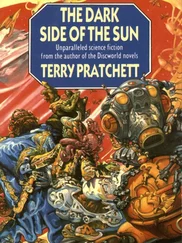Terry Pratchett - The Globe
Здесь есть возможность читать онлайн «Terry Pratchett - The Globe» весь текст электронной книги совершенно бесплатно (целиком полную версию без сокращений). В некоторых случаях можно слушать аудио, скачать через торрент в формате fb2 и присутствует краткое содержание. Жанр: Фантастика и фэнтези, на английском языке. Описание произведения, (предисловие) а так же отзывы посетителей доступны на портале библиотеки ЛибКат.
- Название:The Globe
- Автор:
- Жанр:
- Год:неизвестен
- ISBN:нет данных
- Рейтинг книги:3 / 5. Голосов: 1
-
Избранное:Добавить в избранное
- Отзывы:
-
Ваша оценка:
- 60
- 1
- 2
- 3
- 4
- 5
The Globe: краткое содержание, описание и аннотация
Предлагаем к чтению аннотацию, описание, краткое содержание или предисловие (зависит от того, что написал сам автор книги «The Globe»). Если вы не нашли необходимую информацию о книге — напишите в комментариях, мы постараемся отыскать её.
The Globe — читать онлайн бесплатно полную книгу (весь текст) целиком
Ниже представлен текст книги, разбитый по страницам. Система сохранения места последней прочитанной страницы, позволяет с удобством читать онлайн бесплатно книгу «The Globe», без необходимости каждый раз заново искать на чём Вы остановились. Поставьте закладку, и сможете в любой момент перейти на страницу, на которой закончили чтение.
Интервал:
Закладка:
11001. That's the number 25 in binary. So the jukebox reads the CD as '25', and looks for CD
number 25, which we'll assume is a recording of Charlie Parker playing jazz. On the other hand, elsewhere in the jukebox is CD number 973, which actually is Beethoven's Fifth Symphony.
Then a CD of Beethoven's Fifth can be 'read' in two totally different ways: as a 'pointer' to Charlie Parker, or as Beethoven's Fifth Symphony itself (triggered by whichever CDs start with
973 in binary). Two contexts, two interpretations, two meanings, two results.
Whether something is a message depends upon context, too: sender and receiver must agree upon a protocol for turning meanings into symbols and back again. Without this protocol a semaphore is just a few bits of wood that flap about. Tree branches are bits of wood that flap about, too, but no one ever tries to decode the message being transmitted by a tree. Tree rings the growth rings that appear when you saw through the trunk, one ring per year -are a different matter. We have learned to 'decode' their 'message', about climate in the year 1066 and the like.
A thick ring indicates a good year with lots of growth on the tree, probably warm and wet; a thin ring indicates a poor year, probably cold and dry. But the sequence of tree rings only became a message, only conveyed information, when we figured out the rules that link climate to tree growth. The tree didn't send its message to us.
In biological development the protocol that gives meaning to the DNA message is the laws of physics and chemistry. That is where the exformation resides. However, it is unlikely that exformation can be quantified. An organism's complexity is not determined by the number of bases in its DNA sequence, but by the complexity of the actions initiated by those bases within the context of biological development. That is, by the meaning of the DNA 'message' when it is received by a finely tuned, up-and-running biochemical machine. This is where we gain an edge over those amoebas. Starting with an embryo that develops little flaps, and making a baby with those exquisite little hands, involves a series of processes that produce skeleton, muscles, skin, and so on. Each stage depends on the current state of the others, and all of them depend on contextual physical, biological, chemical and cultural processes.
A central concept in Shannon's information theory is something that he called entropy, which in this context is a measure of how statistical patterns in a source of messages affect the amount of information that the messages can convey. If certain patterns of bits are more likely than others, then their presence conveys less information, because the uncertainty is reduced by a smaller amount. In English, for example, the letter 'E' is much more common than the letter 'Q'. So receiving an 'E' tells you less than receiving a 'Q'. Given a choice between 'E' and 'Q', your best bet is that you're going to receive an 'E'*. And you learn the most when your expectations are proved wrong. Shannon's entropy smooths out these statistical biases and provides a 'fair' measure of information content.
In retrospect, it was a pity that he used the name 'entropy', because there is a longstanding concept in physics with the same name, normally interpreted as 'disorder'. Its opposite, 'order', is usually identified with complexity. The context here is the branch of physics known as thermodynamics, which is a specific simplified model of a gas. In thermodynamics, the molecules of a gas are modelled as 'hard spheres', tiny billiard balls. Occasionally balls collide, and when they do, they bounce off each other as if they are perfectly elastic. The Laws of Thermodynamics state that a large collection of such spheres will obey certain statistical regularities. In such a system, there are two forms of energy: mechanical energy and heat energy.
The First Law states that the total energy of the system never changes. Heat energy can be transformed into mechanical energy, as it is in, say, a steam engine; conversely, mechanical energy can be transformed into heat. But the sum of the two is always the same. The Second Law states, in more precise terms (which we explain in a moment), that heat cannot be transferred from a cool body to a hotter one. And the Third Law states that there is a specific temperature below which the gas cannot go - 'absolute zero', which is around -273 degrees Celsius.
The most difficult -and the most interesting -of these laws is the Second. In more detail, it involves a quantity that is again called 'entropy', which is usually interpreted as 'disorder'. If the gas in a room is concentrated in one corner, for instance, this is a more ordered (that is, less disordered!) state than one in which it is distributed uniformly throughout the room. So when the gas is uniformly distributed, its entropy is higher than when it is all in one corner. One formulation of the Second Law is that the amount of entropy in the universe always increases as time passes. Another way to say this is that the universe always becomes less ordered, or equivalently less complex, as time passes. According to this interpretation, the highly complex world of living creatures will inevitably become less complex, until the universe eventually runs out of steam and turns into a thin, lukewarm soup.
This property gives rise to one explanation for the 'arrow of time', the curious fact that it is easy to scramble an egg but impossible to unscramble one. Time flows in the direction of increasing entropy. So scrambling an egg makes the egg more disordered -that is, increases its entropy which is in accordance with the Second Law. Unscrambling the egg makes it less disordered, and decreases energy, which conflicts with the Second Law. An egg is not a gas, mind you, but thermodynamics can be extended to solids and liquids, too.
At this point we encounter one of the big paradoxes of physics, a source of considerable confusion for a century or so. A different set of physical laws, Newton's laws of motion, predicts that scrambling an egg and unscrambling it are equally plausible physical events. More precisely, if any dynamic behaviour that is consistent with Newton's laws is run backwards in time, then the result is also consistent with Newton's laws. In short, Newton's laws are 'time-reversible'.
However, a thermodynamic gas is really just a mechanical system built from lots of tiny spheres.
In this model, heat energy is just a special type of mechanical energy, in which the spheres vibrate but do not move en masse. So we can compare Newton's laws with the laws of thermodynamics. The First Law of Thermodynamics is simply a restatement of energy conservation in Newtonian mechanics, so the First Law does not contradict Newton's laws.
Neither does the Third Law: absolute zero is just the temperature at which the spheres cease vibrating. The amount of vibration can never be less than zero.
Unfortunately, the Second Law of Thermodynamics behaves very differently. It contradicts Newton's laws. Specifically, it contradicts the property of time-reversibility. Our universe has a definite direction for its 'arrow of time', but a universe obeying Newton's laws has two distinct arrows of time, one the opposite of the other. In our universe, scrambling eggs is easy and unscrambling them seems impossible. Therefore, according to Newton's laws, in a time-reversal of our universe, unscrambling eggs is easy but scrambling them is impossible. But Newton's laws are the same in both universes, so they cannot prescribe a definite arrow of time.
Many suggestions have been made to resolve this discrepancy. The best mathematical one is that thermodynamics is an approximation, involving a 'coarse-graining' of the universe in which details on very fine scales are smeared out and ignored. In effect, the universe is divided into tiny boxes, each containing (say) several thousand gas molecules. The detailed motion inside such a box is ignored, and only the average state of its molecules is considered.
Читать дальшеИнтервал:
Закладка:
Похожие книги на «The Globe»
Представляем Вашему вниманию похожие книги на «The Globe» списком для выбора. Мы отобрали схожую по названию и смыслу литературу в надежде предоставить читателям больше вариантов отыскать новые, интересные, ещё непрочитанные произведения.
Обсуждение, отзывы о книге «The Globe» и просто собственные мнения читателей. Оставьте ваши комментарии, напишите, что Вы думаете о произведении, его смысле или главных героях. Укажите что конкретно понравилось, а что нет, и почему Вы так считаете.
